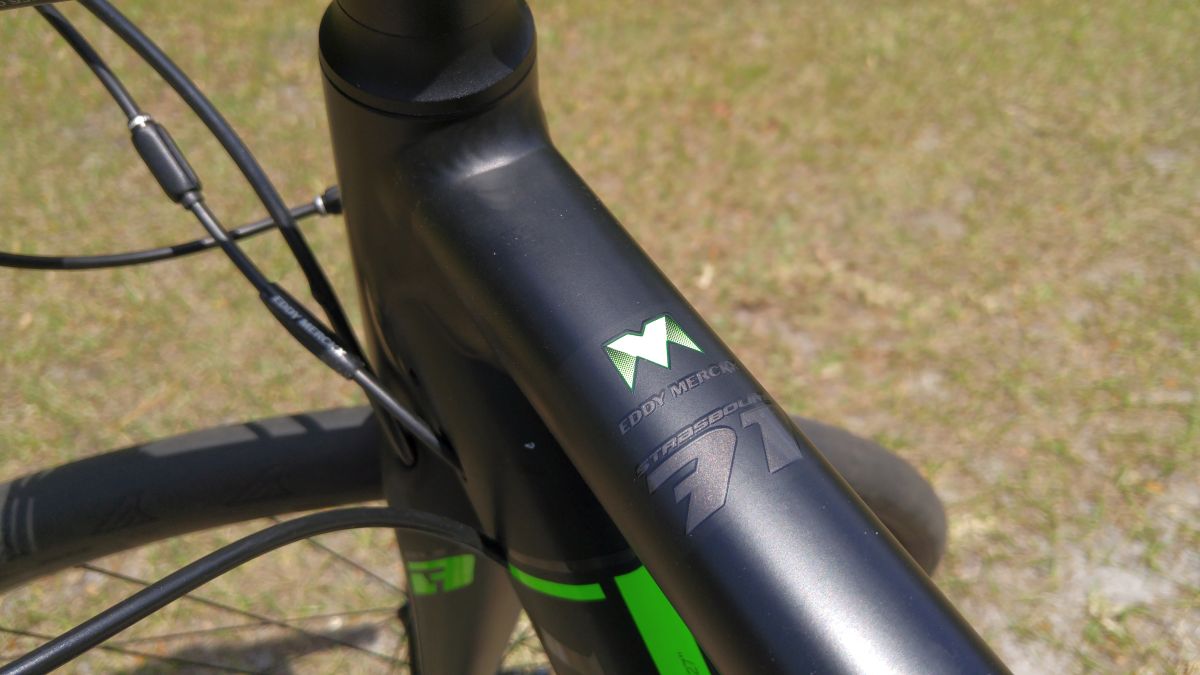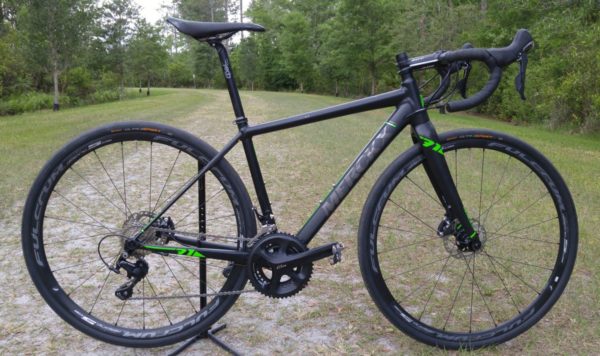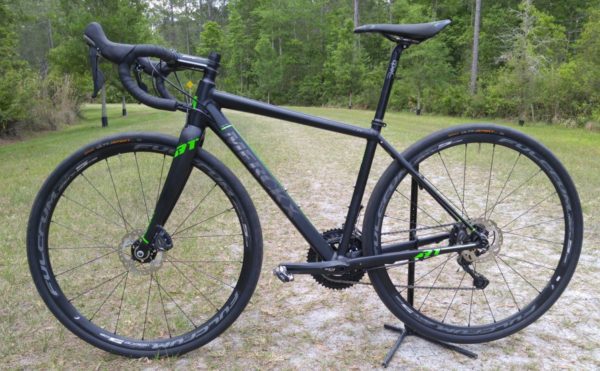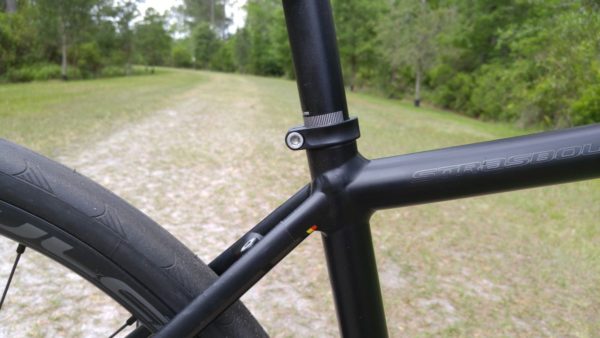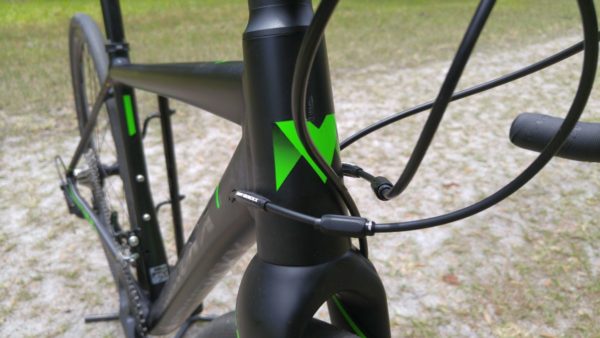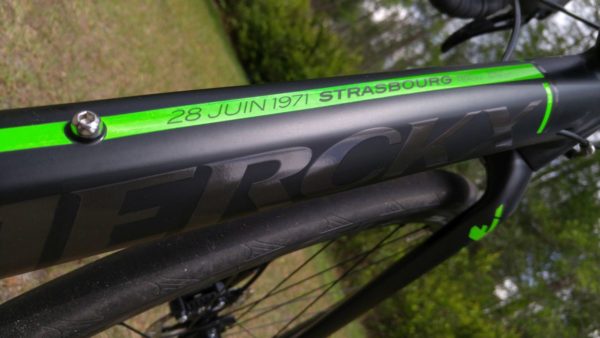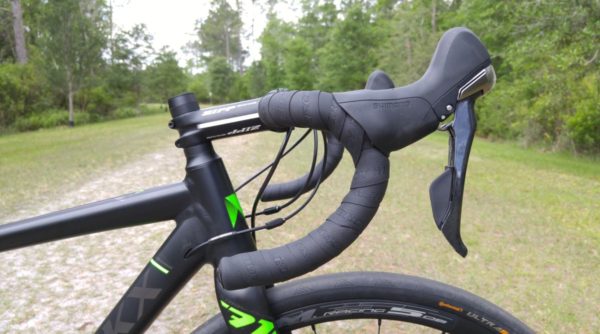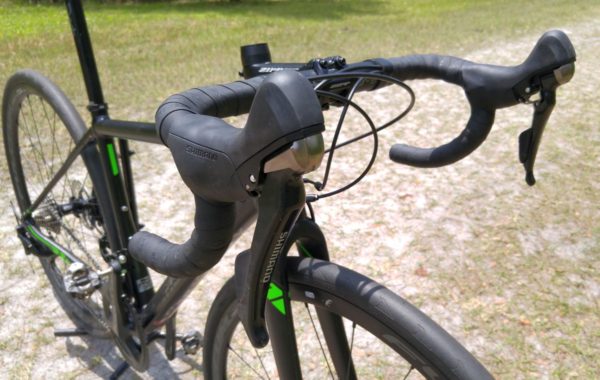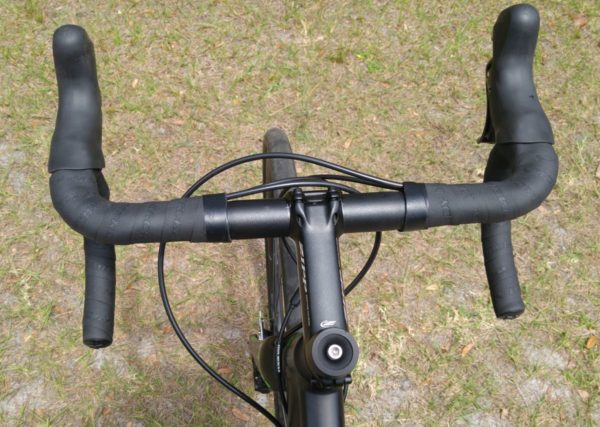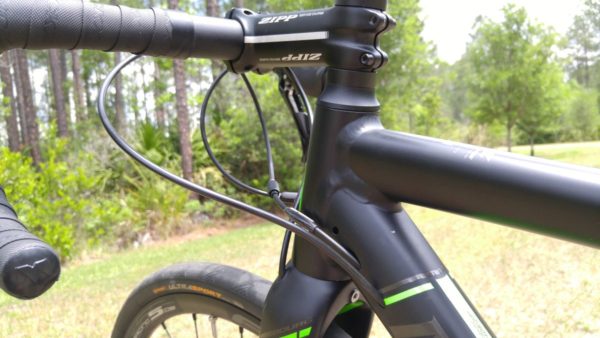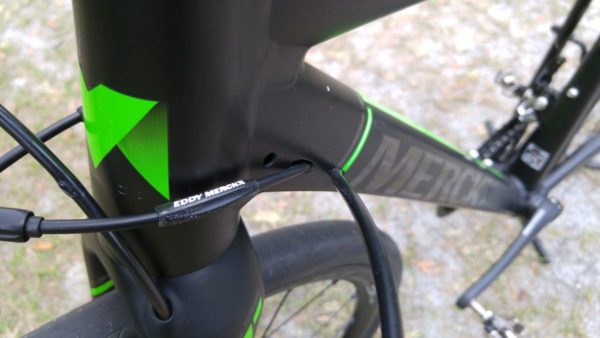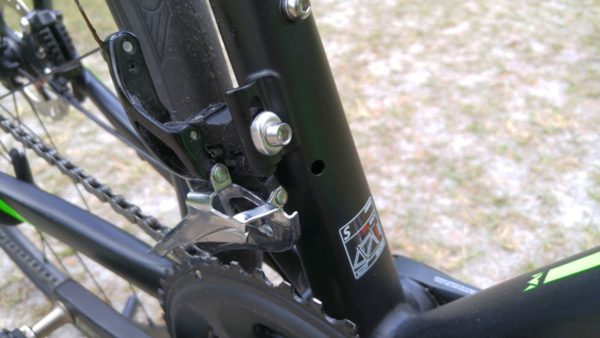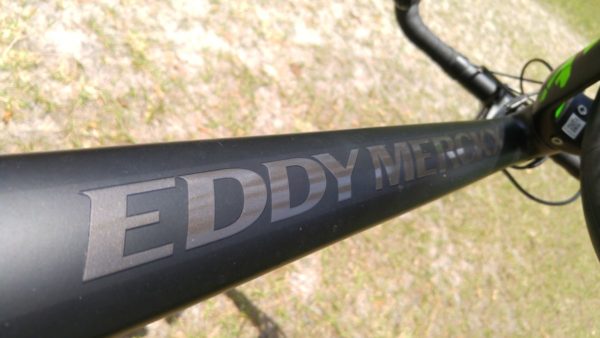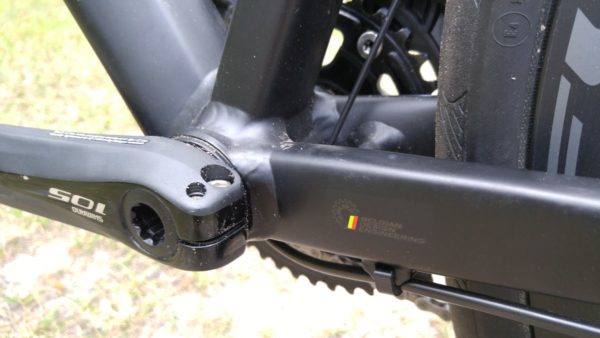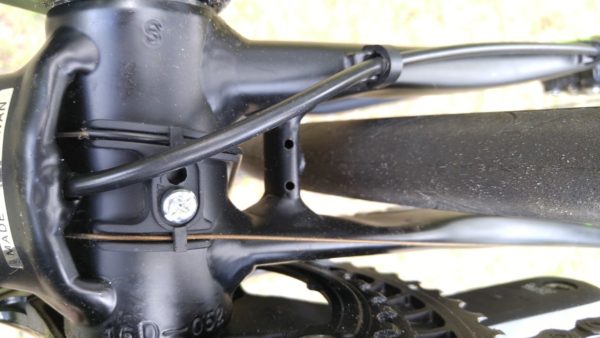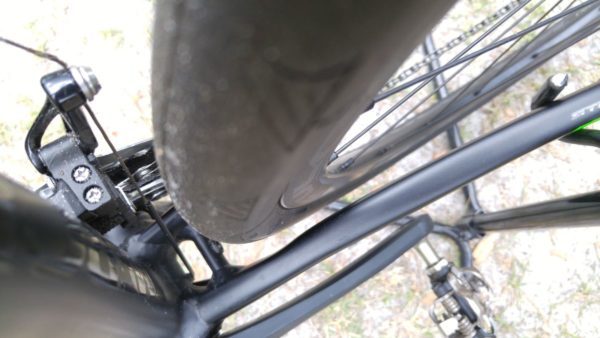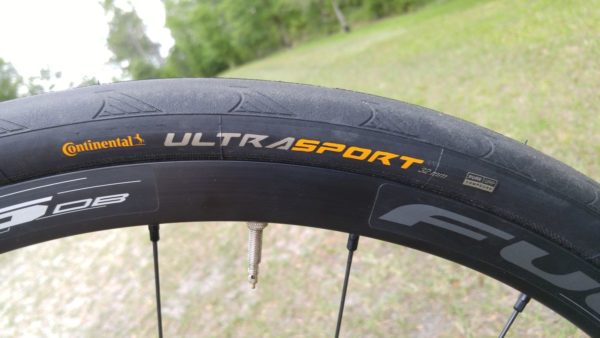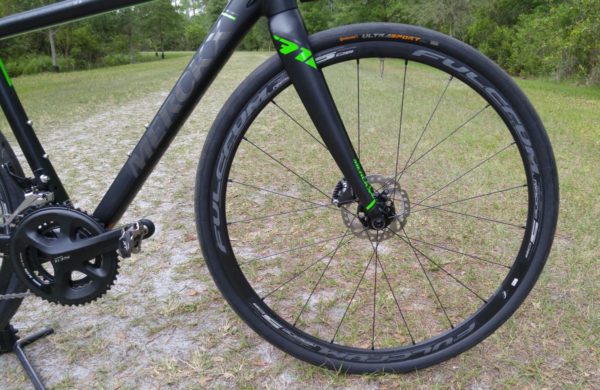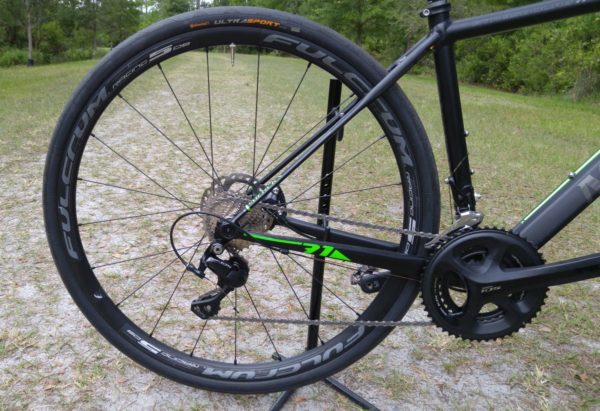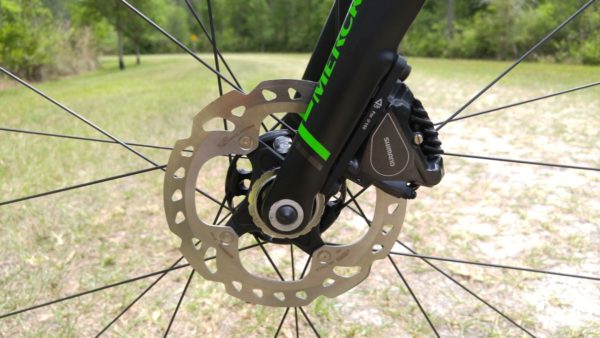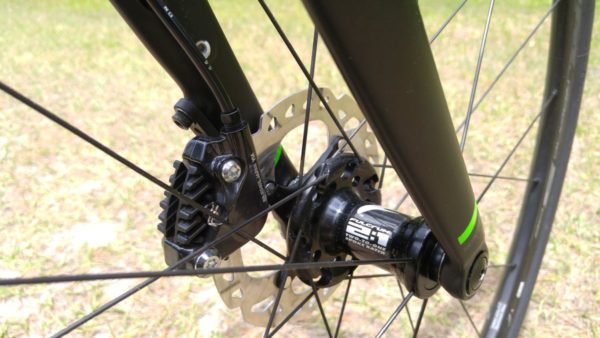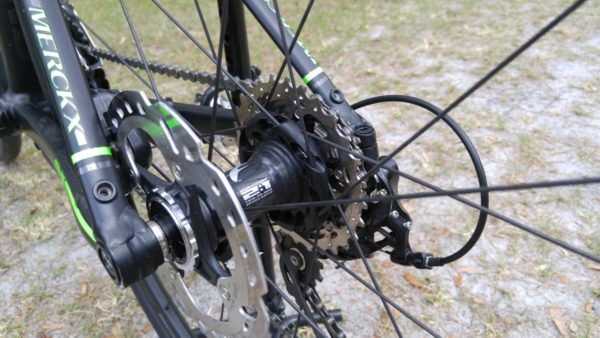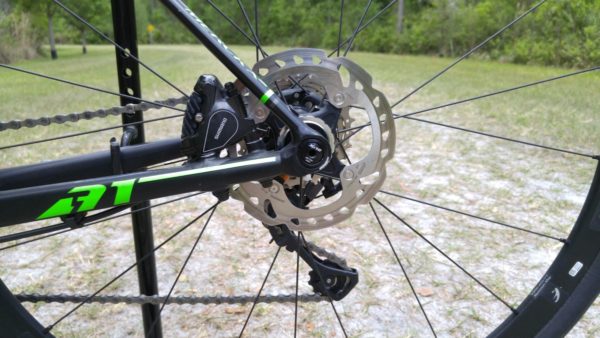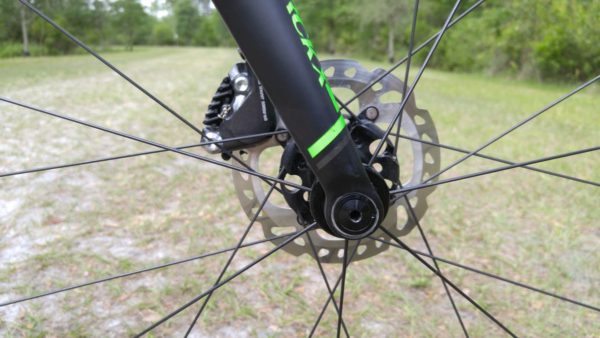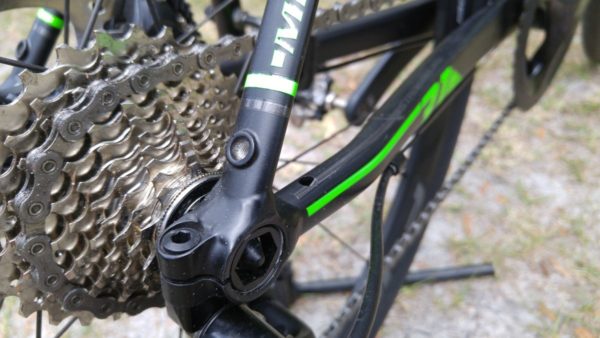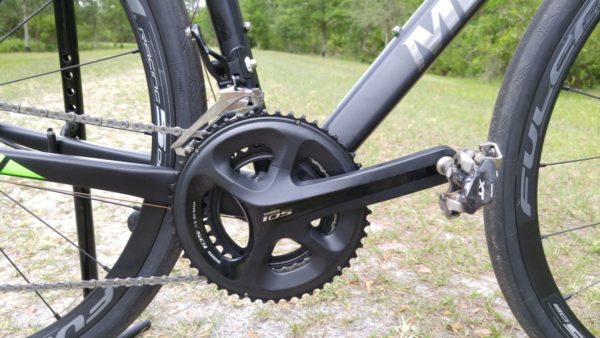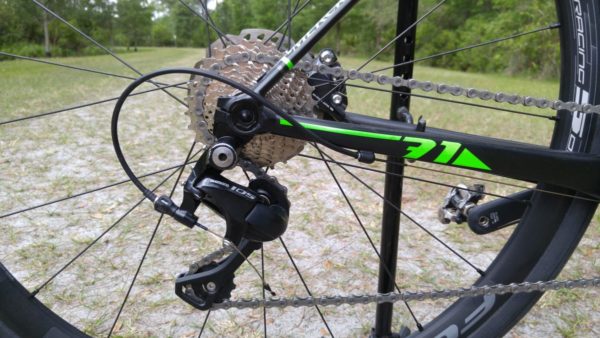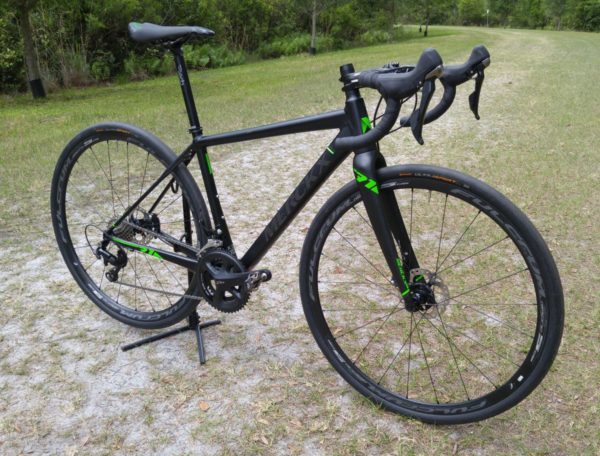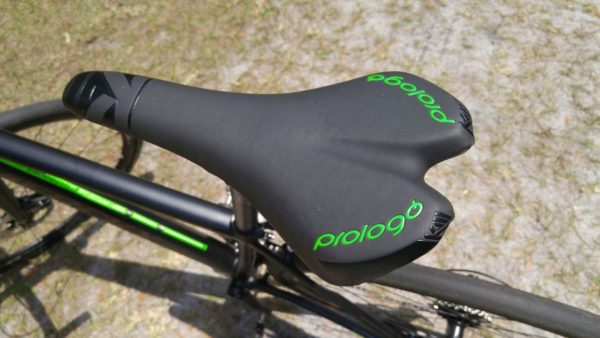If the name Eddy Merckx doesn’t ring a bell, Google “greatest bicycle racer of all time”.
Assuming visits to resulting websites are true to form, the number one response is Eddy Merckx. His palmares include 525 race victories spanning eighteen years including eleven Grand Tour victories, a record which stands to this day. The Eddy Merckx Strasbourg 71 bike is a machine we featured last year, and pays homage to Eddy’s stage victory in the 1971 Tour de France over Roger de Vlaeminck, a great champion and cyclocross specialist, on a gravel road surface with a well-timed bike throw.
The Strasbourg 71 is the first and only gravel bike from the brand, and is centered around a 6069 aluminum frameset and carbon monocoque fork. Shimano’s workhorse 105 11-speed groupset ties the frame and wheelset together, and features 105 level hydraulic / mechanical shifters and hydraulic brake calipers. We put it through the paces…
If you’ve perused any of my reviews for Bikerumor, you’ll know I have a preference for a more aggressive fit. I choose the smallest frame size I can get away with and use a setback seatpost and longer stem to attain my ideal position.
The Deda Zero seatpost supplied with the Strasbourg 71 is of the setback type, and vertically sits right on the limit line for someone of my height. Sure, I could have dropped the seatpost for the photos, but I like to keep my reviews honest.
The Eddy Merckx Strasbourg 71 is available in five sizes, with effective top tube length starting at 52.1cm and ending at 57.5cm. Standing at 5’11” with an 32″ inseam, I fall between the size Small (53.1cm top tube) and size Medium (54.7cm top tube).
The deciding factor for me was the head tube length. I would much rather ride a bike with a shorter head tube and one or two spacers beneath the stem, versus a tall head tube that would have me sitting up far too high. Fitting is a very personal issue, so what works for me, may not work for you…
Mentioned at the top of the article, the Strasbourg 71 is equipped with Shimano’s 105 11-speed mechanical groupset and BR-RS505 hydraulic brakes. While the review bike features pre-release RS685 mechanical / hydraulic levers (the production bikes feature Shimano’s RS505 shifters), brake feel and performance is superb. In fact, I prefer Shimano’s hydraulic disc brakes when paired with their mechanical shifting. I’ve ridden their hydro brakes paired to both Di2 shift levers and 105/Ultegra mechanical shift levers, and there’s a difference. The mechanical shift levers’ braking has a greatly reduced lever throw before brake pads begin making contact with the rotors, which feels far more confident. Both are good, but it all goes back to personal feel, and I prefer these.
Regardless of the shifter in question, the hood shapes for the RS505 and RS685 have proven to be very comfortable; I have spent many hours riding both types.
While the production bikes feature Shimano’s RS505 shifters, which admittedly don’t shift quite as nice as the RS685 models fitted to this bike, both are good. We’re really just talking levels of good, not good versus mediocre. The entire 105-level drivetrain stayed perfectly in adjustment for the duration of the review.
The stock cockpit is all Deda, but I substituted the included 90mm stem for a 110mm Zipp stem for the review.
All brake and shifter cables are routed internally with provision for electronic drivetrain wires, courtesy of the handy ports located at appropriate spots on the frame. The front brake cable routes neatly inside the fork.
In the image above, Shimano’s latest 105 front derailleur can be seen, along with a hole for a wired electronic drivetrain. These little touches are appreciated by those looking to upgrade their drivetrain at a later date.
The 6069 tubing of the Strasbourg 71 is mechanically formed in three separate stages. According to a company representative, this makes the shaping more gradual and causes less potential “crystal slip misalignment” than from a single step hydroform. Translation: stronger tubes that are still shapely.
Frame tubes are triple butted and the welds are dual pass, with the surface finish left unsanded. This is well illustrated in the Strasbourg’s beefy bottom bracket junction, which refused to budge during out the saddle intervals. Likewise, the Shimano press-fit bottom bracket refused to creak or groan.
Cables are hidden from view until they exit beneath the bottom bracket and route to their destination.
Continental’s Ultra Sport II 700c x 32mm tires come as standard equipment on the 2016 Strasbourg, but the bike will clear 700c x 40mm tires.
On the stock build, I feel these tires are the one of the Strasbourg’s weak points. They are certainly fine for most hardpack dirt and gravel roads, but the moment deep gravel or sand is encountered, expect to sink, flounder and flail about the place. A tire like the Maxxis Rambler or Clement X’Plor MSO would be a great improvement.
Fulcum Racing 5 disc brake wheels fitted with Shimano’s SM-RT81 140mm rotors are standard equipment.
I would prefer to see a 160mm rotor fitted to the front wheel, but Shimano has done their homework with the brakes, rotors and heat dissipation. I recently put a similarly equipped gravel bike to the hammer in the mountains of North Carolina fitted with Shimano’s 140mm rotors front and rear – no brake fade, gobs of power and excellent modulation. I would expect the same performance from the Strasbourg 71, assuming I was descending on gravel.
Fulcrum Racing’s Disc 5 wheels are laced in a 2:1 pattern – 2X disc side and radial on the non-disc side. Fender mounts also feature on the inside of the fork legs.
The 2:1 design principle apples to the rear wheel as well, 2x drive side, radial on the disc side.
Shimano’s disc brakes are flat-mount front and rear, with thru-axles complimenting the build.
The Strasbourg’s carbon fork is a monocoque, shoulderless and angular contact unit, with design cues taken directly from the top of the line Eddy Merckx EM525 road bike. They say this type of fork is far superior to forks constructed with a standard bearing seat. Each fork also undergoes a CT scan, ensuring quality is spot on before assembly into a complete bicycle.
Pictured above, neatly integrated fender mounts on the rear stay, and hole on the chainstay for electronic shifting.
Gearing on the Strasbourg 71 revolves around 50 / 34 chainrings. This gearing is fine for some riders, and perhaps those who may opt for paved miles versus gravel miles. However, I feel the bike is overgeared for true gravel use; in my experience, a 46 tooth big ring would be far more appropriate.
By the same token, rear gearing would be more flexible if the stock 11-28 cassette was substituted for an 11-32 cassette. Thankfully, Merckx ‘spec the Strasbourg 71 with a mid-cage derailleur, which will easily handle an 11-32 cassette.
Overall, the Strasbourg 71 is a fine gravel bike that could be a touch better with a tire and gearing swap. The fork tracks beautifully and the frame, while constructed from aluminum, didn’t shake me to death as one came to expect from aluminum frames of days gone. Granted, tire pressure has a lot to do with ride quality and comfort level on a gravel bike.
Aesthetically, the heavily sloped top tube is immediately noticeable, but that does provide plenty of clearance to one’s personal space, should one need to quickly exit the bike! The Strasbourg handles stably and predictably; it isn’t overly quick or nimble, but this is a gravel bike designed for long and comfortable miles. You won’t be disappointed.
The Strasbourg 71 tips the scales at 20.2lbs fitted with the stock Prologo K3 STN saddle and my personal Shimano XT pedals.
Priced at $US 2,999.00 for a complete bike, the Eddy Merckx Strasbourg 71 is a pricier aluminum-framed gravel bike option, but a lot of good engineering seems to have gone into the frame and fork – and it is a nicely equipped Eddy Merckx bicycle.
Photos and article by Gravel Cyclist. Jayson O’Mahoney is the Gravel Cyclist: A website about the Gravel Cycling Experience.
